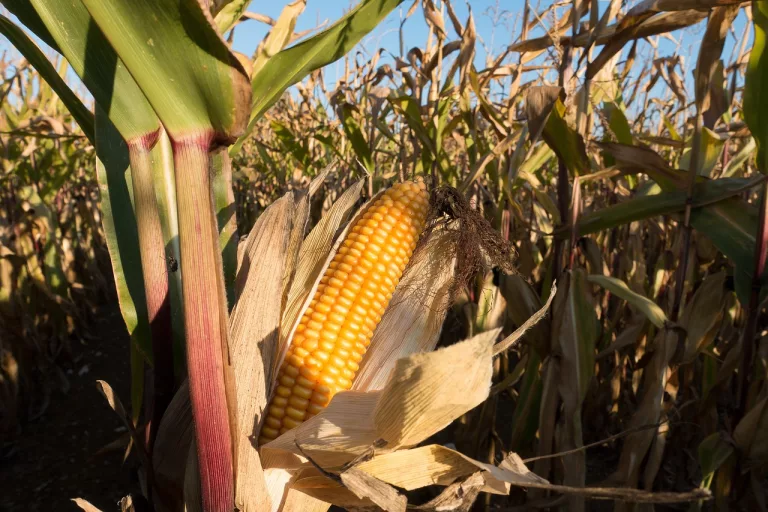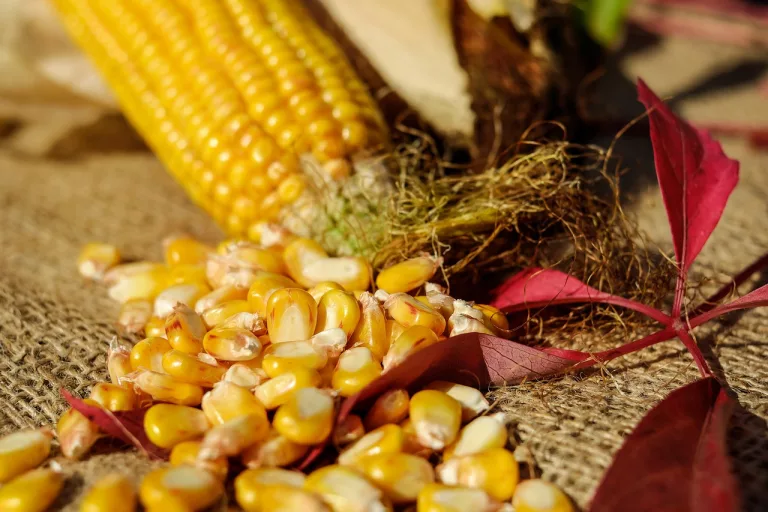Everything you need to know, from pick-your-own to your plate!
Because corn is at its peak at this time of year, we’re eagerly awaiting the first light of August! We hurry to cook it to (finally!) rediscover its crunchy texture and sweet taste. The arrival of corn on our plates is so festive that we make it a real date. Because long before it’s Quebec’s favourite food, it’s first and foremost an experience, an activity, with which we’re delighted to renew our acquaintance. Always! Find out why.
Harvest, munch and enjoy
Originally from Mexico(1), corn is now grown in fields all over the world, and Quebec is no exception. Local artisans grow no fewer than twenty varieties, including the most popular, known as sweet corn. Whether yellow or two-tone, it’s mainly this corn that you can pick, buy at the market or directly from your favorite grower.
Did you know?
-
Although corn is grown as a cereal, it is considered a vegetable when cooked, and botanically falls into the fruit category.(1)
-
Corn is recognized worldwide as one of the most important starchy foods. Flours, starches and semolinas, among others, are made from its kernels.(1)
-
An ear of corn can contain from 700 to… 1000 kernels!(3)
-
Of course, there’s yellow, yellow and white corn, but some varieties are mauve, green and even red.
If there’s one traditional activity in Quebec, it’s pick-your-own. As the seasons change, you’re invited to take to the field to pick the freshest fruits and vegetables you’ve ever eaten. As an added bonus, it’s a chance to meet the passionate people behind the crop and learn about their know-how. There’s a lot of work behind every grain, and harvesting is the final stage.

Tips to make pick-your-own easier
-
Don’t hesitate to contact the growers directly to find out about their corn varieties, whether the cobs are ready for harvesting, opening hours, equipment required, and so on. To find out where to go, take a look at the Terroir et Saveurs du Québec directory.
-
Use pruning shears to easily cut the spike from the stem. If not, you can detach it by hand, with a quick tug. Picking techniques will be explained to you on site!
-
Since not all growers accept credit cards, be sure to carry cash.
-
Of course, on a sunny day, don’t forget your hat, sunscreen and bottle of water. In the middle of the fields, it can get very hot!
-
Here’s another idea! Bring reusable cloth bags, so you don’t have to use plastic ones.
Are you planning a corn roast in the near future? Then why not plan a pick-your-own? It’s an activity that’s both useful and fun. As a farmer for a day, you’ll be able to tell your guests that you’re tasting the fruits of your labor – the true field-to-fork concept!
The history of the corn roast
This tradition dates back to the early days of colonization, when corn growing was already ubiquitous in Canada. In those days, a chore was carried out at the end of the summer to avoid wasting the harvest. The whole village would get to work, shucking and preparing the corn to be stored for the following year. This task could take days. Neighbors, families and friends would get together and take turns husking and cobbing. These days often ended with shared meals and dance parties as a token of thanks.(4) This is only a brief historical summary, but it gives us a better understanding of the origins of this festive occasion, which continues to be organized year after year.
Corn 101: the practical guide
How do you know when corn is ready to pick?
Depending on the variety, corn is harvested from mid-July to mid-September. Don’t hesitate to pick a few kernels off the cob. If they’re slightly milky when you pinch them, it’s ripe.
How long does it keep?
Keep in the fridge for 3 to 4 days.
How can I eat it all year round?
Freeze your reserves! First, blanch your corn by immersing the cobs in boiling water (2 to 3 minutes). After cooling them in a bowl of ice water, wipe them dry and place them in freezer bags. If you prefer to dehull them, place the kernels on a plate before freezing.(3) Keeps for one year.
How to cook them?
-
The traditional boiling water technique! Start cooking in cold water, with a little salt, and when it starts to wriggle, count 7 minutes, then remove your ears of corn. They’ll be cooked to perfection.(2)
-
On the BBQ! Before placing them on a well-oiled grill, peel and precook your ears in boiling water (2 minutes), to avoid drying them out. Cook until grains are colored.(3)
-
In the microwave! Wrap them, unpeeled, in two layers of damp paper towel. Cook on high, about 3 minutes.(3)
-
Puree! De-shell your corn, boil your kernels in water (5 minutes) then reduce with a blender foot. For 2 cups of corn, calculate 1 cup of water.(2)
The finishing touch? Your favorite topping! A drizzle of butter, olive oil or mayonnaise, a pinch of salt or flavored salt, lime zest, a hint of chili powder, or crumbs of fresh cheese or Parmesan, the possibilities are almost endless. Just let your imagination run wild!

Neuville sweet corn, a reserved Quebec appellation
Like Charlevoix Lamb, Ice Cider, Vin du Québec and, most recently, Fromage Fermier, Maïs de Neuville is part of the large family of Quebec appellations réservées, also known as Reserved designations and added-value claims.
But why create a specific appellation for this region? Firstly, because the undisputed reputation of corn from Neuville (Portneuf and Quebec City regions) dates back several decades, and a PGI guarantees the authenticity of its provenance and, what’s more, prevents usurpation of this flagship product.
Secondly, because the Neuville area is said to have a very special geographical position (in the fertile St. Lawrence valley, with a more continental climate than the agricultural lands to the east), which influences the area’s ability to produce an abundance of high-quality sweet corn that can be marketed early.(6) Hence the idea of making it a reserved Quebec appellation.
Good to know
-
A reserved designation is official recognition by the Quebec government of the authenticity of distinctive bio-food products. In other words, the appellation recognizes food products whose production and processing stages are carried out in Quebec, and which stand out from other products in the same category thanks to their unique characteristics.(5)
-
Since 2017, Neuville corn has been the only corn in the province to be protected by an appellation d’origine contrôlée.(6)
-
It’s said that it’s the know-how of Neuville’s dozen or so producers that makes all the difference, since they know which varieties to plant and when to harvest them. There’s also the sandy soil and proximity to the river that give the corn its uniquely sweet taste.(6)
How to recognize Neuville sweet corn?
In short, these are just some of the certification requirements that ensure the good taste of Neuville(6) corn:
-
The seeds used to produce IGP Maïs sucré de Neuville are non-genetically modified varieties;
-
The cobs can be picked by hand or harvested mechanically;
-
It can only be kept for 12 hours without cooling, and for a maximum of 48 hours when stored in a cold room;
-
It is characterized by its brilliant yellow to ivory kernels.
-
And many more.
Finally, whether you opt for U-pick, the big shuck or a trip to the market, our home-grown corn can be enjoyed at any time, and there’s no better time to enjoy it than… right now!
Sources
(1)Radio-Canada, Mordu, Le maïs, 2022
(2)Radio-Canada Info, Tout sur le maïs du Québec, 19 août 2019
(3)Ricardo, Dossier spécial sur le maïs, 2022
(4)Avenues.ca, D’où vient l’épluchette de blé d’Inde, 11 août 2020
(5)Conseil des appellations réservées et des termes valorisants, Qu’est-ce qu’une appellation réservée, 2022
(6)Conseil des appellations réservées et des termes valorisants, IGP – Maïs sucré de Neuville, 2022







